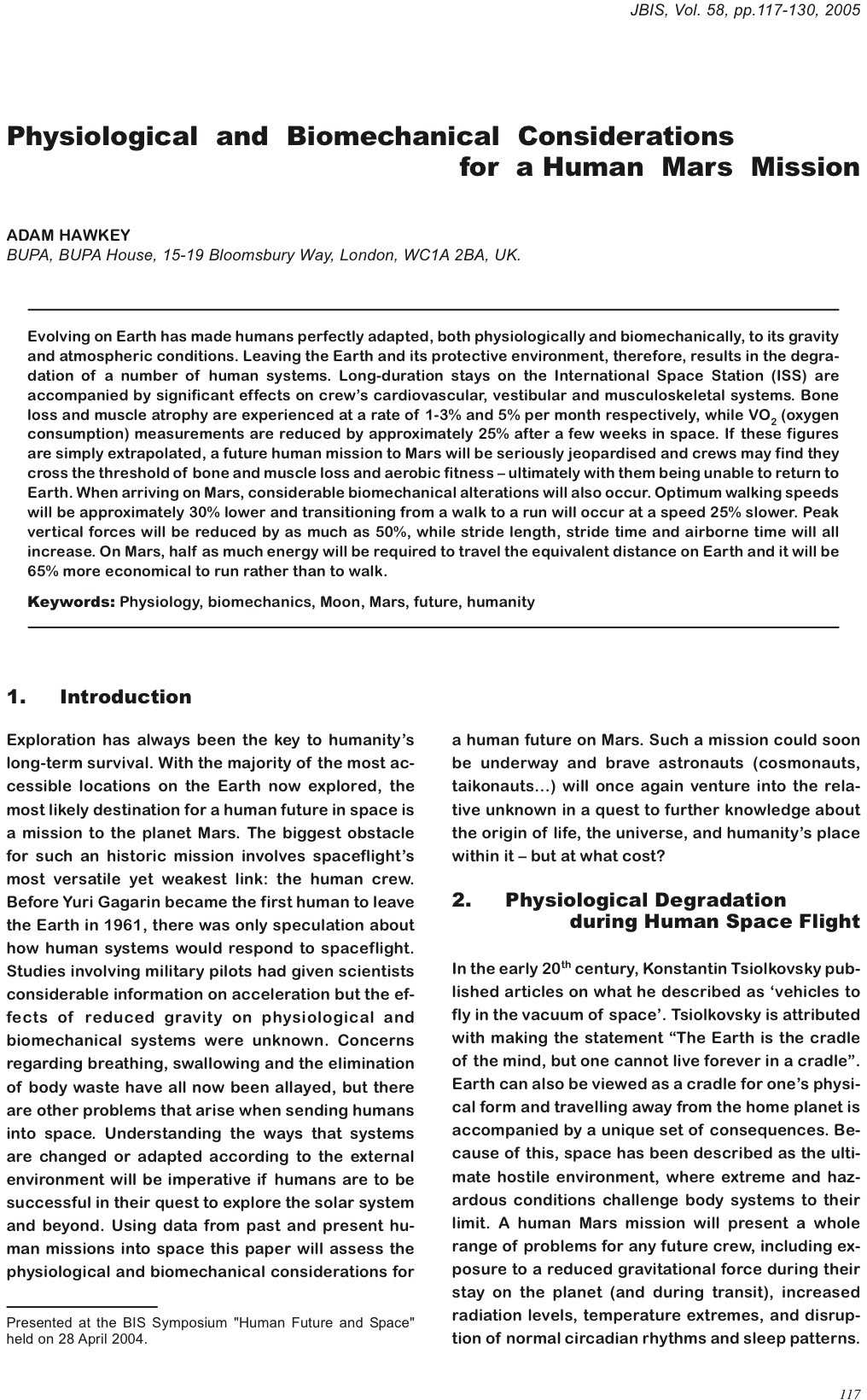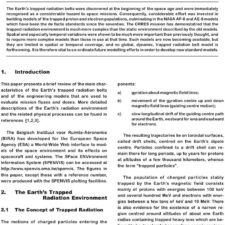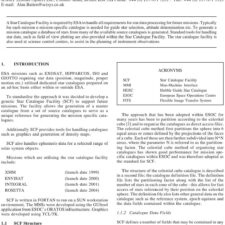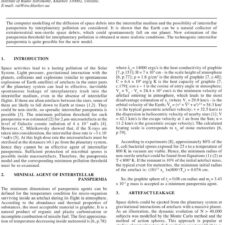Physiological and Biomechanical Considerations for a Human Mars Mission
£5.00
A. Hawkey (2005), JBIS, 58, 117-130
Refcode: 2005.58.117
Abstract:
Evolving on Earth has made humans perfectly adapted, both physiologically and biomechanically, to its gravity and atmospheric conditions. Leaving the Earth and its protective environment, therefore, results in the degradation of a number of human systems. Long-duration stays on the International Space Station (ISS) are accompanied by significant effects on crew’s cardiovascular, vestibular and musculoskeletal systems. Bone loss and muscle atrophy are experienced at a rate of 1-3% and 5% per month respectively, while VO2 (oxygen consumption) measurements are reduced by approximately 25% after a few weeks in space. If these figures are simply extrapolated, a future human mission to Mars will be seriously jeopardised and crews may find they cross the threshold of bone and muscle loss and aerobic fitness – ultimately with them being unable to return to Earth. When arriving on Mars, considerable biomechanical alterations will also occur. Optimum walking speeds will be approximately 30% lower and transitioning from a walk to a run will occur at a speed 25% slower. Peak vertical forces will be reduced by as much as 50%, while stride length, stride time and airborne time will all increase. On Mars, half as much energy will be required to travel the equivalent distance on Earth and it will be 65% more economical to run rather than to walk.





